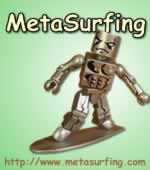Tooth decay begins when acid produced by bacteria in plaque dissolves the mineral in the teeth, causing microscopic holes or 'pores' to form. As the decay process progresses these micro-pores increase in size and number. Eventually the damaged tooth may have to be drilled and filled to prevent toothache, or even removed.
(...)
"This may sound too good to be true, but we are essentially helping acid-damaged teeth to regenerate themselves. It is a totally natural non-surgical repair process and is entirely pain-free too," said Professor Jennifer Kirkham, from the University of Leeds Dental Institute, who has led development of the new technique.
The 'magic' fluid was designed by researchers in the University of Leeds' School of Chemistry, led by Dr Amalia Aggeli. It contains a peptide known as P 11-4 that -- under certain conditions -- will assemble together into fibres. In practice, this means that when applied to the tooth, the fluid seeps into the micro-pores caused by acid attack and then spontaneously forms a gel. This gel then provides a 'scaffold' or framework that attracts calcium and regenerates the tooth's mineral from within, providing a natural and pain-free repair.
The technique was recently taken out of the laboratory and tested on a small group of adults whose dentist had spotted the initial signs of tooth decay. The results from this small trial have shown that P 11-4 can indeed reverse the damage and regenerate the tooth tissue.
